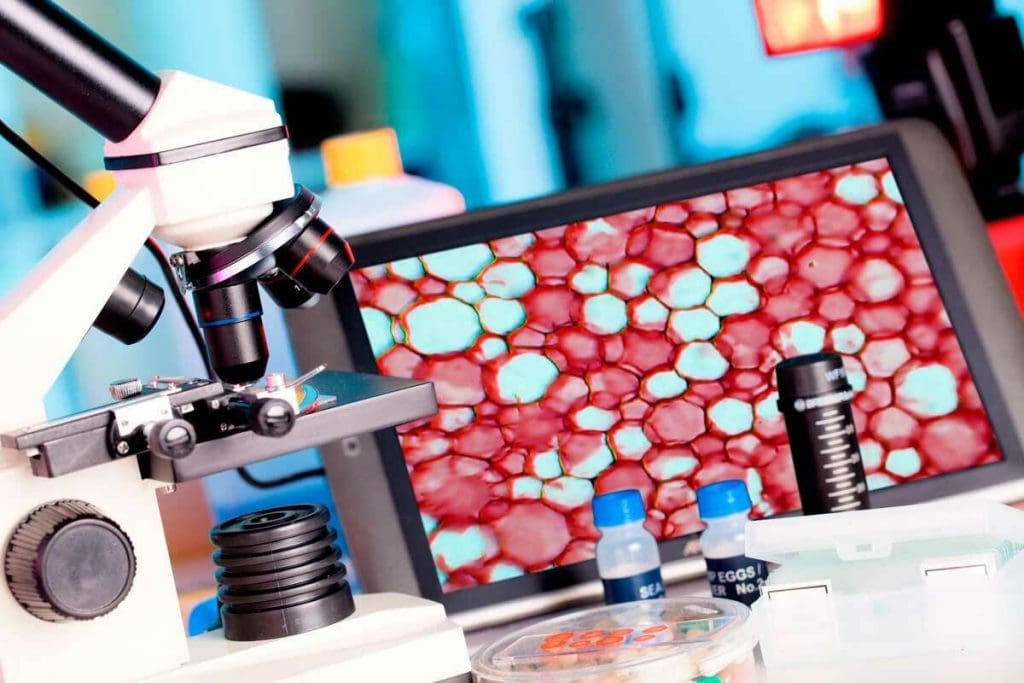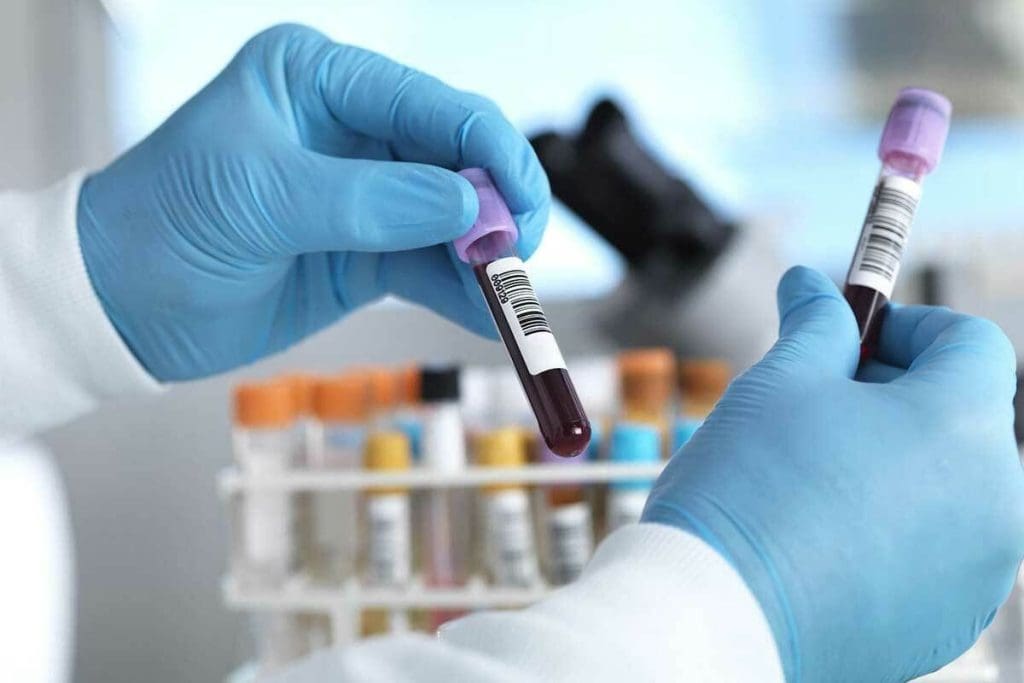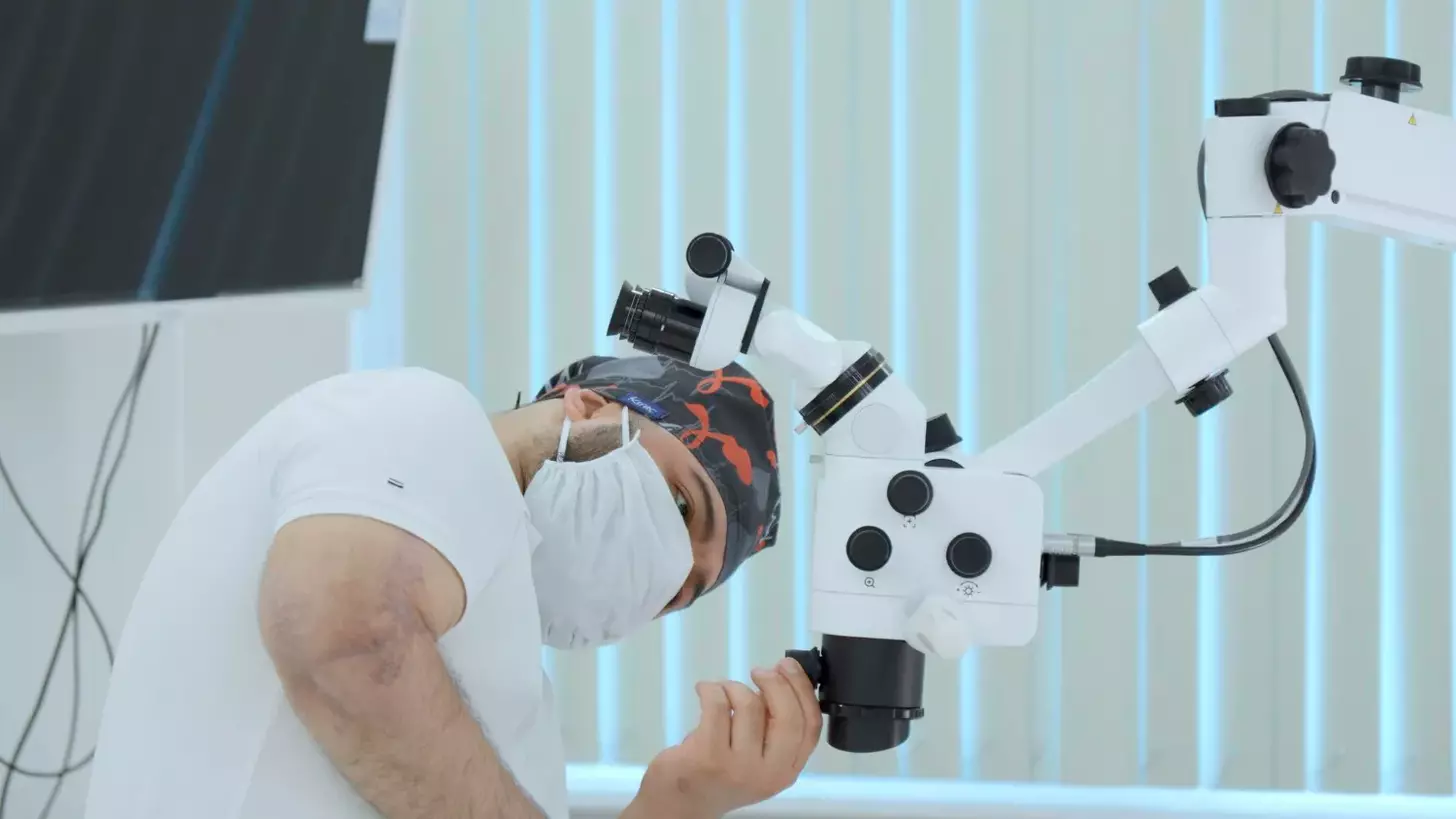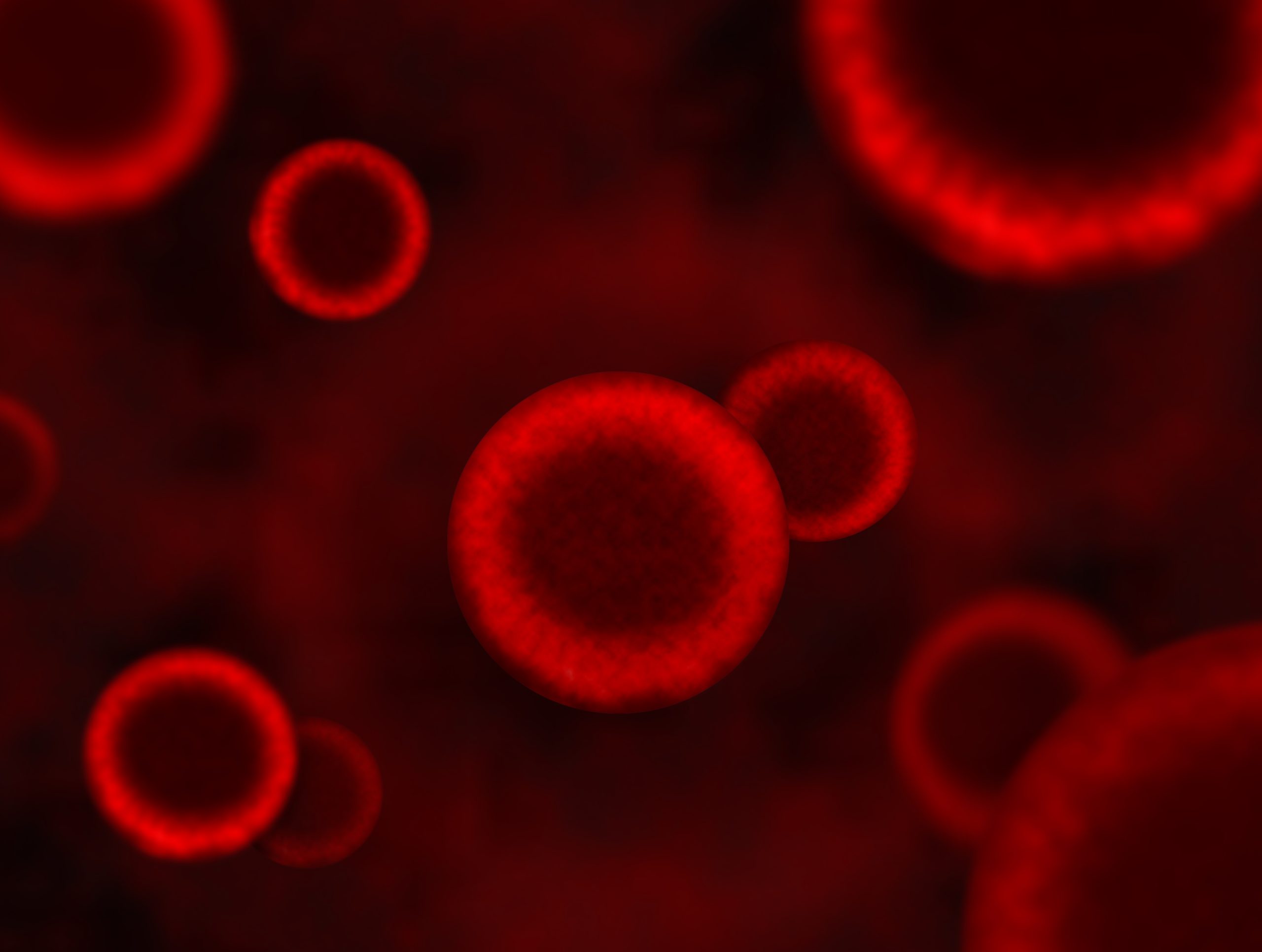Last Updated on November 27, 2025 by Bilal Hasdemir

Getting ready for a white blood cell scan is easy with the right help. At Liv Hospital, we focus on accurate diagnosis and making patients comfortable. A Ceretec WBC scan is a nuclear medicine imaging technique for finding infections and inflammation, even when other tests don’t show anything.
NCBI Bookshelf says In-111 WBC scintigraphy is a great tool for spotting infections and inflammation. Our nuclear medicine guide will guide you through each step. This ensures you’re ready for your scan and the care that follows.
Key Takeaways
- Understand the purpose and benefits of a Ceretec WBC scan.
- Learn how to prepare for the scan to ensure accurate results.
- Discover what to expect during and after the scanning process.
- Find out how Liv Hospital’s patient-centered approach can support you.
- Explore the advantages of choosing a specialized nuclear medicine guide.
What Is a Ceretec WBC Scan and How Does It Work?

A Ceretec WBC scan is a high-tech way to find infections and inflammation in the body. It’s great for spotting where infections or inflammation are happening. This helps doctors give better treatment.
Definition and Purpose of White Blood Cell Scans
A white blood cell scan, like the Ceretec WBC scan, finds infections or inflammation in the body. White blood cells are key to fighting off infections. By using a special tracer, doctors can see where these cells go. This shows where infections or inflammation are.
This scan helps doctors diagnose hard-to-spot conditions.
The Science Behind Technetium-99m HMPAO (Ceretec) Labeling
The Ceretec WBC scan uses Technetium-99m HMPAO to label white blood cells. First, white blood cells are taken from the blood. Then, they’re labeled with Technetium-99m HMPAO. After that, they’re put back into the patient.
These labeled cells go to where there’s infection or inflammation. This makes it easy to see where the problem is through imaging.
Types of Infections and Inflammations Detected
The Ceretec WBC scan can find many infections and inflammation types. These include:
- Osteomyelitis (bone infection)
- Prosthetic joint infections
- Inflammatory bowel disease
- Intra-abdominal infections
By finding the exact spot of these problems, doctors can make better treatment plans. This helps patients get better faster.
Medical Conditions That Benefit From a Ceretec WBC Scan

Many medical conditions get better with a Ceretec WBC scan. This advanced test helps us find and treat health problems well.
Identifying Bone and Joint Infections
Bone and joint infections, like osteomyelitis, need quick and accurate diagnosis. The Ceretec WBC scan is great for finding these infections. This means we can start treatment right away.
Locating Abdominal and Pelvic Inflammatory Processes
It’s hard to find inflammation in the belly and pelvis with old tests. But the Ceretec WBC scan is very good at spotting these problems. This helps us manage them better.
Diagnosing Fever of Unknown Origin
Fever of unknown origin (FUO) is when we can’t find the cause of the fever. The Ceretec WBC scan is a big help in finding where the problem is. This lets us treat it properly.
Advantages of Nuclear Medicine WBC Scans Over Traditional Imaging
Nuclear medicine WBC scans are better than traditional imaging in many ways. They are more sensitive and specific. This makes them great for accurate diagnoses, even in tough cases.
Sensitivity and Specificity in Infection Detection
Scans like the Ceretec WBC scan are top-notch for finding infections. They’re key when infections are hard to spot or when other tests don’t work. These scans help doctors create better treatment plans, which helps patients get better faster.
Comparison to CT, MRI, and Ultrasound
Comparing nuclear medicine WBC scans to CT, MRI, and ultrasound shows their strengths. Here’s a quick look at the differences:
| Imaging Modality | Sensitivity in Infection Detection | Specificity in Infection Detection |
| Nuclear Medicine WBC Scan | High | High |
| CT Scan | Moderate | Moderate |
| MRI | High for certain infections | High for certain infections |
| Ultrasound | Variable | Variable |
Benefits for Patients with Implants or Devices
Patients with implants or devices often struggle with traditional imaging. Nuclear medicine WBC scans are a great option because they don’t get blocked by metal implants. This is super helpful for diagnosing infections in people with prosthetics, pacemakers, or other implants.
We suggest nuclear medicine WBC scans for their ability to give accurate diagnoses in many situations. They’re really useful when traditional imaging can’t do the job.
Preparing for Your Ceretec WBC Scan: One Week Before
To get the best results from your Ceretec WBC scan, start preparing a week early. We’ll guide you through the key steps. This way, you’ll be ready for a smooth procedure.
Medical History Review Requirements
Reviewing your medical history is a must before your Ceretec WBC scan. We need to look at your medical records carefully. This helps us spot any issues that might affect the scan or its results.
Medication Adjustments and Possible Interactions
Some medicines might need to be changed or stopped before your scan. It’s important to tell us about all the drugs you’re taking. This includes over-the-counter medicines and supplements.
| Medication Type | Potential Interaction | Recommended Action |
| Antibiotics | May affect white blood cell labeling | Inform your doctor about recent use |
| Steroids | Can impact inflammation detection | Discuss possible changes with your doctor |
Telling Your Doctor About Recent Antibiotics or Steroids
Telling your doctor about recent antibiotics or steroids is key. These can change how accurate the Ceretec WBC scan is. By sharing this info, we can make sure you get the best results.
By following these steps and talking openly with your doctor, you’ll be ready for your Ceretec WBC scan. If you have any questions or worries, please contact us.
48 Hours Before Your Tagged White Blood Cell Scan
As you count down the 48 hours to your Ceretec WBC scan, we’ll guide you through the necessary preparations. These steps will help make your diagnostic test a success. It’s important to follow these guidelines to ensure the accuracy and success of the procedure.
Dietary Guidelines and Restrictions
In the 48 hours leading up to your scan, stick to a normal, balanced diet. Try to avoid eating too much fat, as it can affect the radiotracer. Staying hydrated is more critical than dietary restrictions at this stage.
Hydration Requirements
Drinking plenty of water is key to your tagged white blood cell scan. Drink lots of water in the 48 hours before the procedure. Proper hydration helps the labeled white blood cells circulate well, ensuring clear and accurate images.
Activities to Avoid Before the Procedure
Avoid strenuous physical activities or exercises in the 48 hours before your scan. These could cause injury or inflammation, affecting the scan results. Also, try to reduce stress and get plenty of rest to help your body prepare for the procedure.
| Preparation Guidelines | Recommendations |
| Diet | Maintain a balanced diet, avoid excessive fatty foods |
| Hydration | Drink plenty of water |
| Activities | Avoid strenuous exercises, minimize stress, and get plenty of rest |
By following these guidelines, you’ll be well-prepared for your tagged white blood cell scan. This ensures the procedure yields accurate and useful diagnostic information.
The Complete Ceretec WBC Scan Procedure: Step by Step
We will walk you through the Ceretec WBC scan process. It’s a nuclear medicine test for finding infections and inflammation. It has several important steps for accurate results.
Initial Blood Drawing Process
The first step is drawing your blood. This happens in a hospital or clinic by a skilled phlebotomist. The blood is then ready for lab work.
White Blood Cell Isolation in the Laboratory
In the lab, white blood cells are separated from the blood. This uses centrifugation and other methods. The white blood cells are then ready for labeling.
Radiotracer Labeling Technique
The white blood cells are labeled with Technetium-99m HMPAO, or Ceretec. This lets doctors track the cells as they move in the body. They gather in infected or inflamed areas.
“The use of Technetium-99m HMPAO for labeling white blood cells has revolutionized the detection of infections and inflammatory processes.” –
Nuclear Medicine Expert
Reinjection of the Labeled White Blood Cells
After labeling, the cells are put back into the patient. These cells go to infected or inflamed spots. There, they can be seen with a gamma camera during imaging.
| Step | Description |
| 1. Blood Drawing | Initial blood draw for white blood cell isolation |
| 2. Laboratory Processing | Isolation of white blood cells |
| 3. Radiotracer Labeling | Labeling white blood cells with Ceretec |
| 4. Reinjection | Reinjection of labeled white blood cells |
Knowing the Ceretec WBC scan steps helps patients prepare. Our team offers clear guidance and support every step of the way.
The Imaging Experience: What Happens During the Scan
The Ceretec WBC scan uses a gamma camera to find the radiotracer in white blood cells. This tech lets our team see and check infections and inflammation in the body.
Gamma Camera Technology and Operation
The gamma camera is key in nuclear medicine imaging. It catches the gamma rays from the radiotracer in white blood cells. Our cameras have special parts that make clear images of what we need to see.
Patient Positioning Requirements
Getting the right images for the Ceretec WBC scan requires the right patient position. Patients lie on a comfy table under the gamma camera. The exact position depends on where in the body we’re looking.
Duration of Different Imaging Phases
The scan time can change based on the protocol and body parts scanned. It usually lasts from 30 minutes to several hours. We do multiple scans at different times to follow the white blood cells.
| Imaging Phase | Typical Duration |
| Initial Imaging | 30-60 minutes |
| Delayed Imaging | 2-4 hours |
| Additional Imaging | Variable, as needed |
Managing Comfort and Anxiety During the Procedure
We know some patients might feel anxious about the scan. Our team is here to support and explain everything. We want you to feel at ease, and let us know if you’re uncomfortable.
Knowing what to expect can help you feel more ready for the Ceretec WBC scan. We aim to make the experience as comfortable as possible. This way, we get the best images for your diagnosis and treatment.
Potential Risks and Side Effects to Be Aware Of
It’s important to know the risks of Ceretec WBC scans for safety. These scans are mostly safe but involve some risks. They use radiation and other factors that might affect some patients.
Radiation Exposure Considerations
Ceretec WBC scans use a radioactive tracer called Technetium-99m HMPAO. This means patients get some radiation. The dose is kept low, but it’s key to think about the benefits and risks, mainly for young patients or those needing many scans.
Possible Reactions to the Procedure
Some people might react to the tracer or the scan, like allergic reactions or discomfort. Our team is ready to handle these issues and keep you safe.
Special Considerations for Specific Patient Groups
Some groups need extra care, like pregnant or breastfeeding women, kids, and people with certain health issues. For example, pregnancy is usually not safe because of the risk to the baby. We check each patient’s situation to give the best care.
Here’s a quick guide for Ceretec WBC scan patients:
| Patient Group | Special Consideration |
| Pregnant Women | Generally contraindicated due to fetal radiation exposure |
| Breastfeeding Women | May require temporary cessation of breastfeeding |
| Children | Radiation dose adjusted according to age and weight |
In summary, Ceretec WBC scans are useful but come with risks and side effects. Knowing these and taking steps to avoid them helps make the scans safe and useful.
After Your White Blood Cell Scan: Recovery and Results
After your Ceretec WBC scan, we help you with the recovery steps and what to expect for your results. This time needs care and understanding for your safety and accurate results.
Post-Procedure Care Instructions
After your Ceretec WBC scan, you’ll get detailed care instructions. These might include:
- Resuming normal activities as advised by your healthcare provider
- Monitoring the injection site for any signs of reaction
- Maintaining good hydration helps your body eliminate the radiotracer
It’s vital to follow these instructions carefully to avoid risks and ensure a smooth recovery.
Radiation Safety Guidelines
The Ceretec WBC scan uses a small amount of radiation. We give radiation safety guidelines to protect others, like pregnant women and children. These guidelines suggest:
- Limiting close contact with others for a few hours post-scan
- Using good hygiene practices, such as washing your hands thoroughly after using the restroom
- Drinking plenty of fluids to help flush out the radiotracer
How Nuclear Medicine Radiologists Interpret Your Images
Nuclear medicine radiologists study your Ceretec WBC scan images. They look for where the radiotracer has built up. This buildup can show infection or inflammation. They interpret by:
- Assessing the distribution and intensity of the radiotracer uptake
- Comparing the images with your medical history and other diagnostic findings
- Identifying any abnormalities that may require further investigation
Timeframe for Receiving Results
The time to get your Ceretec WBC scan results varies. Usually, your healthcare provider gets the results in 24 to 48 hours after the scan. They will then talk to you about the results, explaining what they mean for your diagnosis and treatment.
Getting your Ceretec WBC scan results is a big step in your diagnosis. We’re here to support you from start to finish, helping you understand your results.
Conclusion: The Vital Role of Ceretec WBC Scans in Modern Diagnostic Medicine
Ceretec WBC scans are key in today’s medical world. They help find infections and inflammation. These scans give detailed info on the body’s health.
They are very useful in making accurate diagnoses. This guide has shown how important Ceretec WBC scans are. They help find many health issues, like infections in bones and joints.
In short, Ceretec WBC scans are essential in modern medicine. As technology gets better, they will become even more important. This helps doctors give better care and patients get the right treatment.
FAQ
What is a Ceretec WBC scan?
A Ceretec WBC scan is a way to find infections in the body. It uses special cells from the patient and a radioactive tracer called Ceretec. This helps doctors see where infections are.
What conditions can a Ceretec WBC scan diagnose?
A Ceretec WBC scan is great for finding infections in bones, joints, and the belly. It’s also good for finding the cause of a fever when it’s not clear. This helps doctors treat infections better.
How do I prepare for a Ceretec WBC scan?
Preparation starts a week before the scan. You’ll talk about your health history and any medicines you take. You’ll also follow a special diet for 48 hours before the scan.
What happens during the Ceretec WBC scan procedure?
The scan starts with drawing your blood. Then, your white blood cells are labeled with Ceretec. They’re put back into you. The cells go to infected areas, which are then seen with a special camera.
Are there any risks or side effects associated with a Ceretec WBC scan?
While safe, Ceretec WBC scans can have risks. These include radiation exposure. Some people might react to the tracer or the scan. Certain groups need extra care.
How long does it take to receive the results of a Ceretec WBC scan?
Results come in a few hours to a few days. A nuclear medicine expert will look at the images and give you the results.
What are the benefits of a Ceretec WBC scan over traditional imaging methods?
Nuclear medicine scans, like Ceretec WBC scans, are better than CT, MRI, and ultrasound. They’re very good at finding infections, even in hard cases.
Do I need to follow any specific instructions after the Ceretec WBC scan?
Yes, you’ll get instructions after the scan. These include how to stay safe from radiation to protect others.
Can a Ceretec WBC scan be used for patients with implants or devices?
Yes, Ceretec WBC scans work for people with implants. They don’t get in the way of metal or other materials.
Is a Ceretec WBC scan painful?
The scan might be a little uncomfortable because of the blood draw. But you’ll need to stay very quiet for a bit. It’s not usually painful.
How does a Ceretec WBC scan work in detecting infections?
The scan labels your white blood cells with Ceretec. These cells go to infected areas. This lets doctors see exactly where the infection is through special imaging.
References
- de Vries, E. F. J., et al. (2010). Guidelines for the labelling of leucocytes with 99mTc-HMPAO. European Journal of Nuclear Medicine and Molecular Imaging, 37(3), 430-438. https://pmc.ncbi.nlm.nih.gov/articles/PMC2844965/






